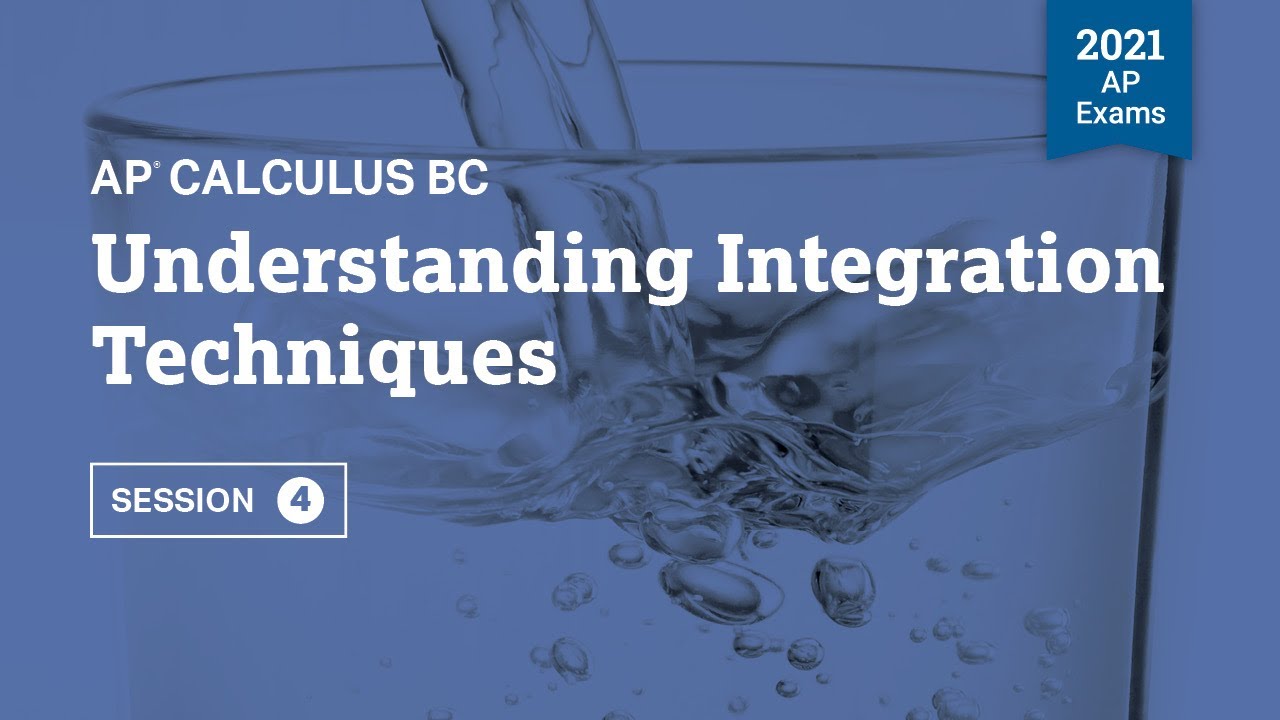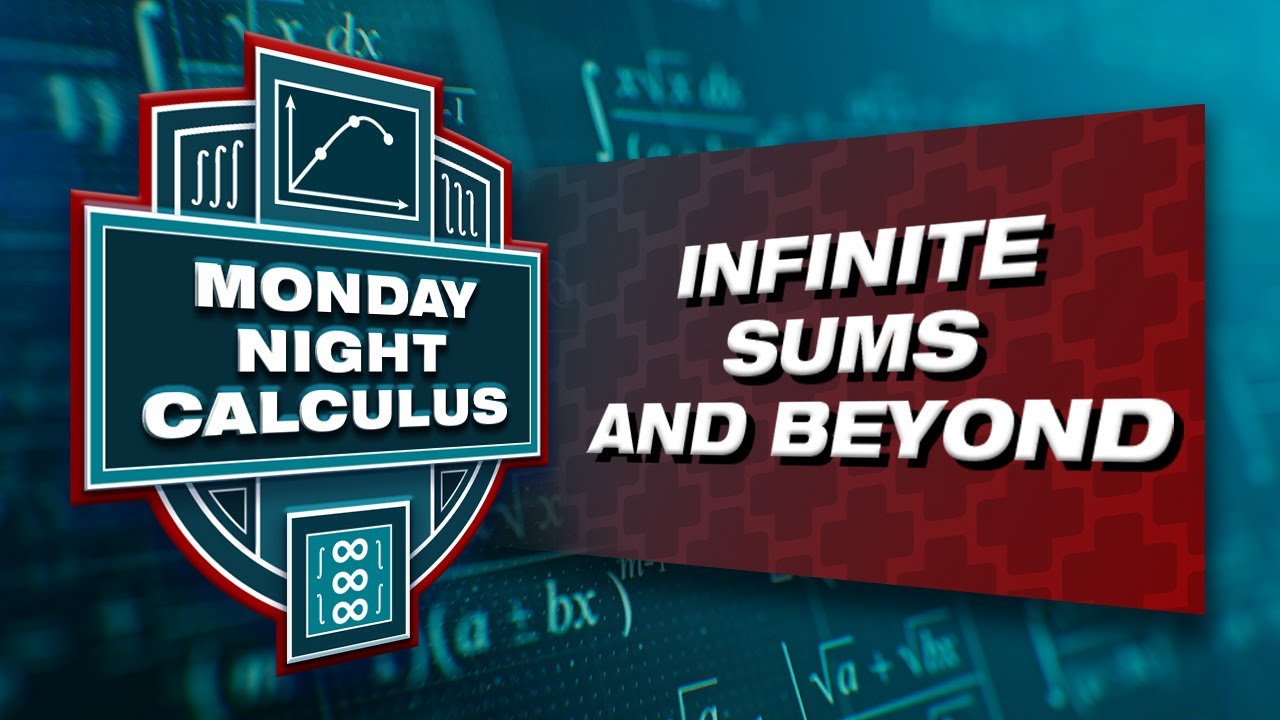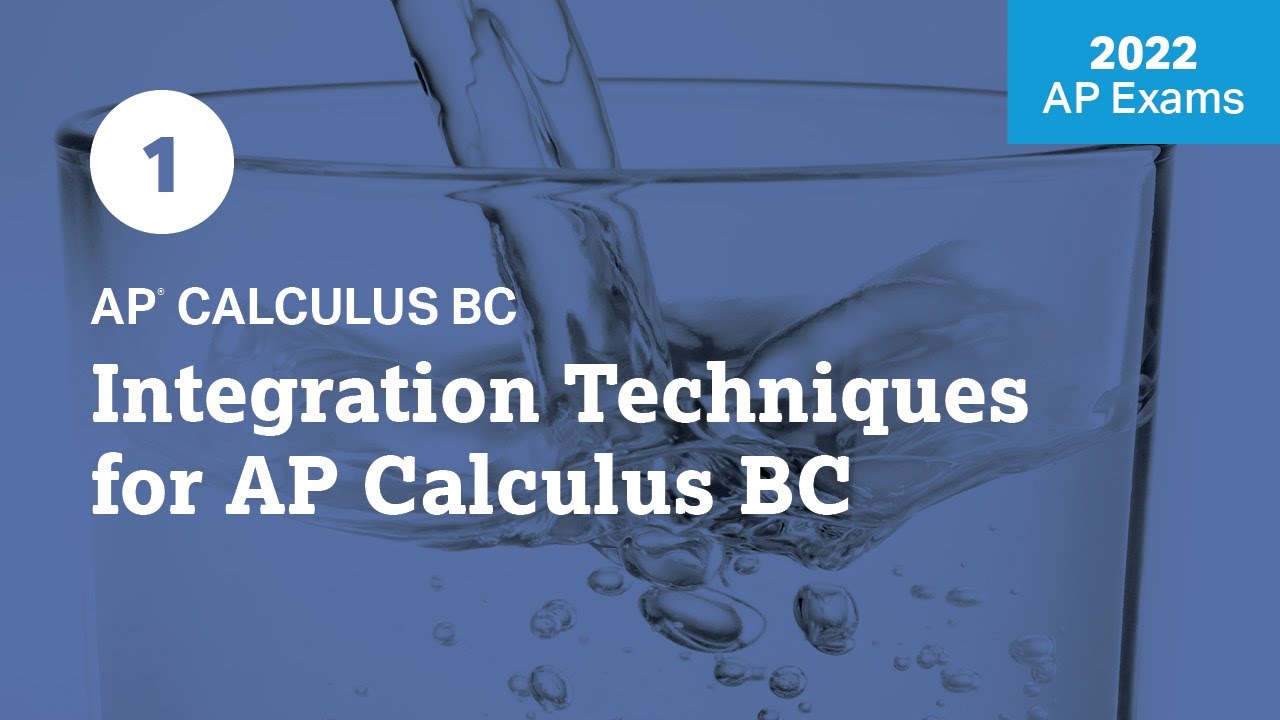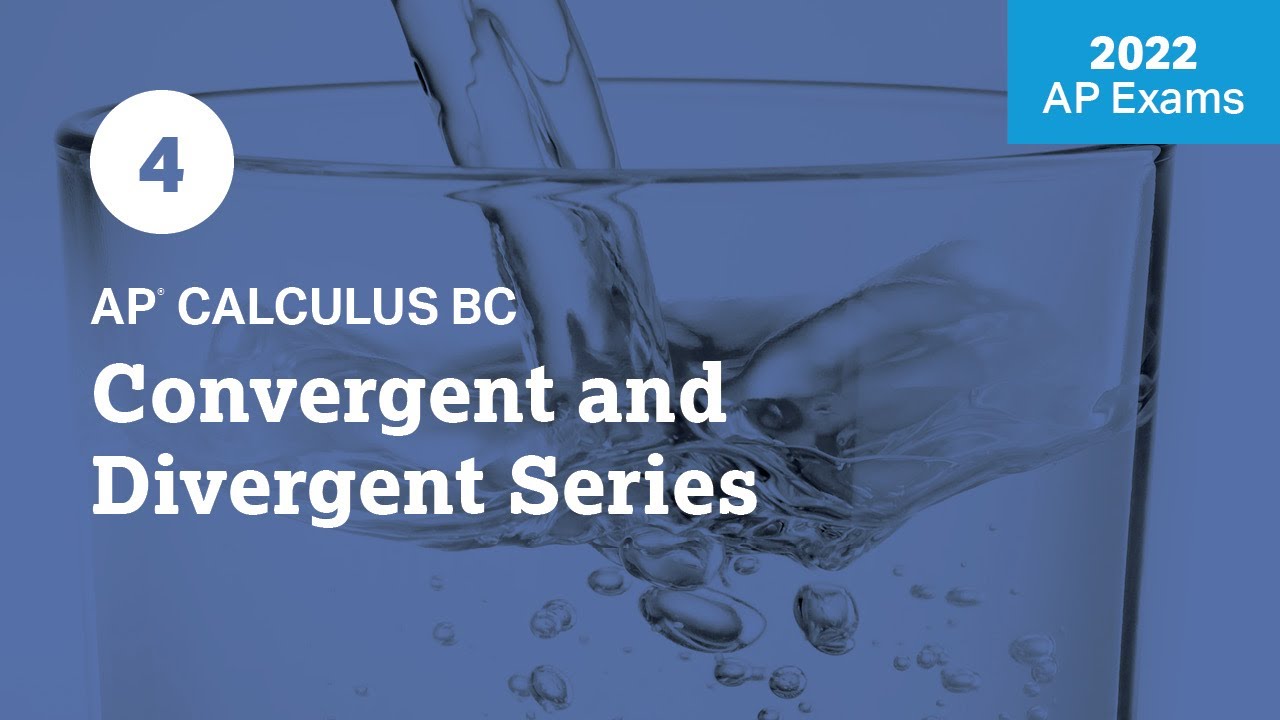5 | MCQ | Practice Sessions | AP Calculus BC
TLDRIn this AP Daily Practice session, Bryan and Tony delve into advanced calculus concepts, focusing on partial fraction integration, improper integrals, and series convergence. They demonstrate how to tackle complex integrals by decomposing them into simpler fractions and applying the fundamental theorem of calculus. The session also covers the convergence tests for p-series and geometric series, highlighting the importance of recognizing the type of problem and applying the correct mathematical rules. Additionally, they explore the relationship between vectors and parametric equations in calculating acceleration and emphasize the significance of integration by parts for tackling products of functions.
Takeaways
- 📚 The session is focused on AP Calc BC exam preparation, specifically covering integration techniques and series convergence.
- 🧩 The first problem involves integrating a rational function using partial fractions, which is a key topic in AP Calc BC.
- 🔍 To solve the integration problem, the讲师 suggests simplifying and recognizing the most efficient method, in this case, partial fraction decomposition.
- 📝 The讲师 demonstrates how to find the constants A and B in the partial fraction decomposition by choosing clever values for x.
- 🌟 The讲师 emphasizes the importance of understanding the type of problem and the role of 'n' in series questions, which helps in discerning whether it's a p-series or a geometric series.
- 📈 For p-series to converge, the exponent must be strictly greater than 1, while for geometric series, the common ratio must have an absolute value less than 1.
- 🛤️ The讲师 explains how to find the acceleration vector of a particle in motion, highlighting the relationship between position, velocity, and acceleration vectors.
- 📊 The讲师 walks through the process of differentiating parametric equations to find velocity and acceleration vectors.
- 🧬 The session also covers integration by parts, an advanced integration technique that is essential for the AP Calc BC exam.
- 📝 The讲师 provides a step-by-step guide on applying integration by parts, including picking u and dv, and dealing with the resulting integral.
- 🎯 The讲师 concludes by reminding viewers of the importance of practicing these techniques to boost their AP Calc BC scores.
Q & A
What is the topic of the first multiple-choice problem discussed in the transcript?
-The first multiple-choice problem discussed is about integration using partial fractions, a topic from the AP Calc BC exam curriculum.
How does the speaker suggest approaching an integration problem?
-The speaker suggests pausing to think about the type of problem, simplifying it if possible, and recognizing the most efficient way to tackle the problem, such as using partial fractions when the denominator can be factored.
What method is used to decompose the given rational function in the first problem?
-Partial fraction decomposition is used to decompose the rational function into the sum of two individual rational functions with constants on top.
How are the values for A and B determined in the partial fraction decomposition?
-The values for A and B are determined by clearing out the fractions, multiplying both sides by the common denominator, and then plugging in clever values for x that help solve for A and B.
What is the result of the integration of the given function from 0 to 1?
-The result of the integration is -3 ln(2), which simplifies to the answer choice B when using logarithmic properties.
What is an improper integral and how is it handled in the context of the second problem discussed?
-An improper integral is one that has a boundary of infinity or negative infinity. It is handled by writing it as a limit, replacing infinity with a variable and then taking the limit as that variable approaches the boundary value.
How does the convergence of a p-series and a geometric series differ?
-A p-series converges if the exponent of n (the base) is strictly greater than 1, while a geometric series converges if the absolute value of the common ratio (in this case, p - 6 over 2) is less than 1.
What is the role of 'n' in determining whether a series is a p-series or a geometric series?
-In a p-series, 'n' is the base of the exponent, while in a geometric series, 'n' is the exponent itself.
How is the acceleration vector of a particle calculated?
-The acceleration vector of a particle is calculated by taking the derivative of the velocity vector, which is obtained by taking the derivative of the position vector.
What is the significance of the chain rule in calculating the derivatives of the vector components in the parametric equations?
-The chain rule is crucial for finding the derivatives of the vector components when dealing with functions of functions, such as the exponential and logarithmic functions in the parametric equations.
How is integration by parts used in the last problem of the transcript?
-Integration by parts is used to find the antiderivative of the product of two functions. It involves choosing u and dv, finding the derivatives and integrals of these, and then combining them using the integration by parts formula.
Why is it important to include the lower limit of integration when evaluating definite integrals in the context of the integration by parts problem?
-Including the lower limit of integration is essential because it ensures that the constant of integration is accounted for, especially when dealing with exponential functions where e to the power of zero equals one, which can affect the final result.
Outlines
📚 AP Calc BC: Partial Fractions Integration
In this session, Bryan Passwater and Tony Record tackle a multiple-choice question involving the integration of a rational function using partial fractions. The problem focuses on integrating (x + 4)/[(x + 1)(x - 2)] from 0 to 1. Bryan explains the process of partial fraction decomposition, setting up constants A and B, and using clever value selection for x to solve for these constants. The solution involves simplifying the integral, applying the fundamental theorem of calculus (FTC), and combining like terms to arrive at the final answer. The video emphasizes the importance of recognizing problem types and applying the correct methods to solve them efficiently.
📈 Improper Integrals and Series Convergence
The second paragraph discusses the concept of improper integrals and the convergence of p-series and geometric series. Tony Record and Bryan Passwater work through a problem that requires determining the convergence of two series based on the value of p. They explain how to identify the type of series (p-series or geometric series) and the conditions for their convergence. For the p-series, the exponent must be greater than 1, leading to the conclusion that p must be greater than 3. For the geometric series, the common ratio must have an absolute value less than 1, which narrows down the solution to p being greater than 4 but less than 8. The final answer is found to be p equals 7, corresponding to choice C in the multiple-choice question.
🚀 Calculus BC: Vectors, Parametric Equations, and Integration by Parts
In the final paragraph, the focus shifts to vectors, parametric equations, and the calculation of an acceleration vector. The problem involves finding the acceleration vector of a particle moving on an xy-plane, given by specific parametric equations. Bryan demonstrates how to differentiate the position vector to find the velocity vector and then differentiate again to obtain the acceleration vector. The process involves using chain rules and understanding the relationship between position, velocity, and acceleration. The acceleration vector is then evaluated at a specific time (t = 2), leading to the correct choice in the multiple-choice question. Additionally, the paragraph covers the integration by parts technique, which is an essential advanced integration method for the AP Calc BC exam.
Mindmap
Keywords
💡Integration
💡Partial Fractions
💡Improper Integral
💡Convergence Test
💡Vector
💡Parametric Equations
💡Derivative
💡Acceleration Vector
💡Integration by Parts
💡Chain Rule
Highlights
Introduction to AP Daily Practice Sessions, session number 5, focusing on AP Calc BC exam preparation.
Emphasis on the importance of understanding the type of problem before attempting to solve it.
Integration problem using partial fractions, a key BC topic.
Explanation of partial fraction decomposition and the process of finding constants A and B.
Use of clever values for x to simplify the process of finding A and B in the partial fraction decomposition.
Integration by parts method and its application to solve complex integrals.
Solution of the improper integral with an upper boundary of infinity using limits.
Explanation of the convergence test for p-series and the requirement for the exponent to be greater than 1.
Convergence test for geometric series and the condition that the absolute value of the common ratio must be less than 1.
Finding the acceleration vector of a particle using parametric equations and derivatives.
Integration by parts technique as an advanced integration method introduced in the BC curriculum.
The importance of not overlooking the impact of the lower limit of integration, especially with exponential functions.
Combination of geometric and p-series to solve for the value of p that allows both series to converge.
Use of chain rule in finding the velocity vector from the position vector.
Derivative of the velocity vector to find the acceleration vector.
Substitution of specific time value into the acceleration vector equation to find the answer.
Conclusion of the session with a reminder to practice more problems for AP exam score improvement.
Transcripts
Browse More Related Video

2021 Live Review 4 | AP Calculus BC | Understanding Integration Techniques

Off to Infinity! Series and Improper Integrals

2022 Live Review 1 | AP Calculus BC | Integration Techniques for AP Calculus BC

1 | MCQ | Practice Sessions | AP Calculus BC

3 | FRQ (No Calculator) | Practice Sessions | AP Calculus BC

2022 Live Review 4 | AP Calculus BC | Convergent and Divergent Series
5.0 / 5 (0 votes)
Thanks for rating: